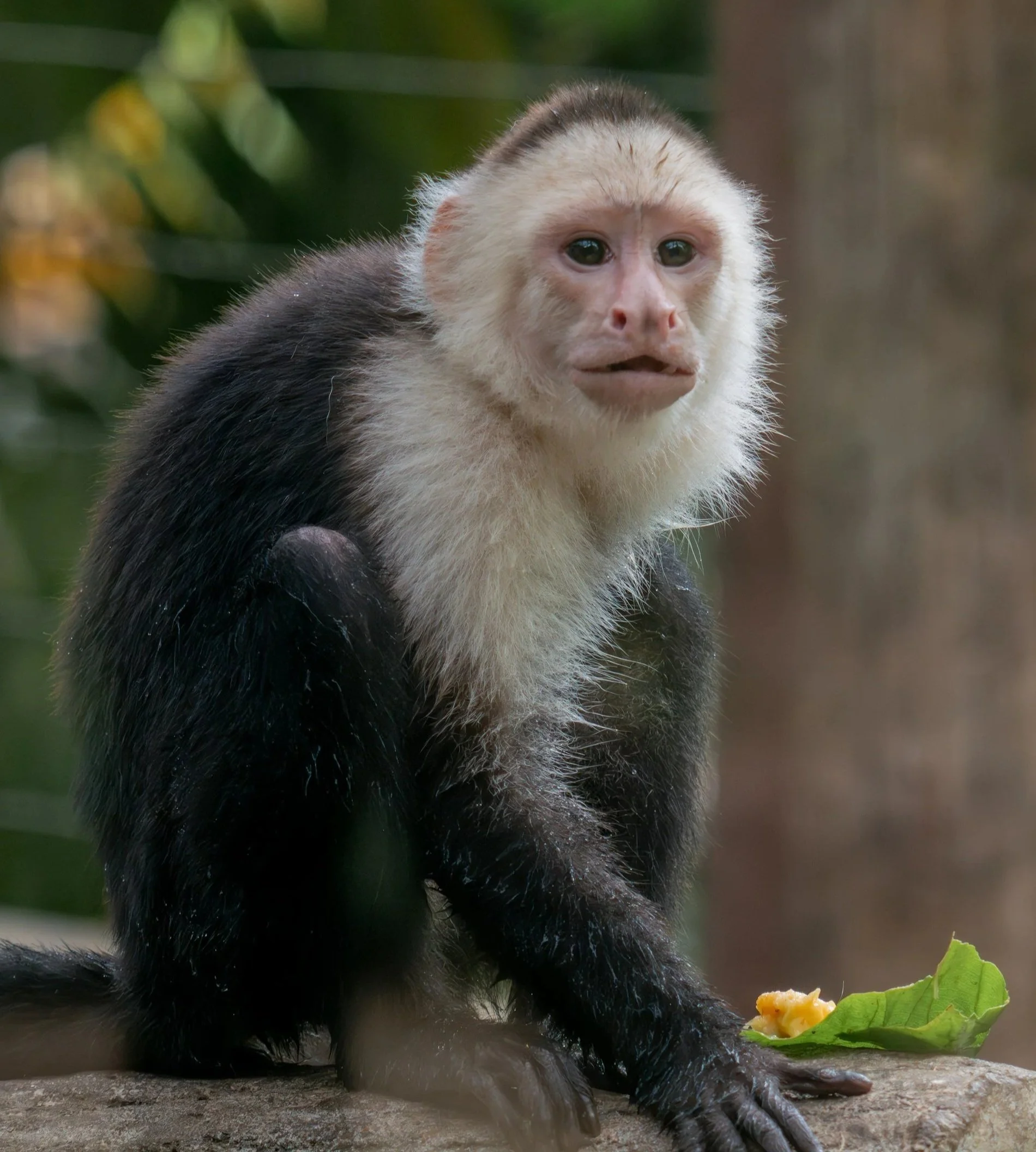Capuchin
Capuchins are highly intelligent, social primates that live in large groups together. They are active during the day, spending their time up in the trees and on the ground foraging. They use tools to crack open nuts and sometimes even fend off snakes. They follow a polygynous system for reproduction. Capuchans are born after a gestation period of 160-180 days and reach sexual maturity after 4-7 years.
White Faced Capuchin
Scientific Name: Cebus Imitator
Habitat: Lowland Rainforests, Mangroves, Dry Deciduous Forests
Diet: Omnivore
Weight: 5-7 lbs.
Conservation Status: Vulnerable
Range: Central America to Northwestern South America
Lifespan: 37 Years
Size: 32 in.
The white-faced capuchin, also known as the white-headed capuchin, is characterized by a distinctive black body and limbs, with a pale or white face, throat, and shoulders. Their expressive faces and high manual dexterity make them one of the most recognizable and behaviorally complex monkeys in Central and South America.
Brown Capuchin
Scientific Name: Sapajus Apella
Habitat: Tropical Rainforests, Gallery Forests, Dry Deciduous Forests
Diet: Omnivore
Weight: 3-10 lbs.
Conservation Status: Least Concern
Range: Colombia and Venezuela, South to Paraguay and Northern Argentina
Lifespan: 15-50 Years
Size: 15-17 in.
The brown capuchin, also known as the tufted or black-capped capuchin, is characterized by a coat of coarse, dark brown to black fur and a lighter underside. It is easily recognized by the dark tufts of hair that form a half-circle shape on either side of its head. These monkeys possess a prehensile tail that is nearly as long as the body, used for grasping and stabilizing while navigating the forest canopy.
Weeper Capuchin
Scientific Name: Celbus Olivaceus
Habitat: Secondary Forests, Tropical Lowland Rainforests, Gallery Forests
Diet: Omnivore
Weight: 5-6 lbs.
Conservation Status: Least Concern
Range: Venezuela, Brazil, Guyana, French Guiana, Suriname
Lifespan: 36-50 Years
Size: 20 in.
The weeper capuchin, also known as the brown weeper capuchin, is characterized by olive-brown fur covering most of its body and a lighter, sometimes yellowish or cream-colored face and throat. Weepers get their name because of their sorrowful-sounding vocalizations, similar to a weeping sound. Communication within the group includes vocalizations, facial expressions, and body postures.



